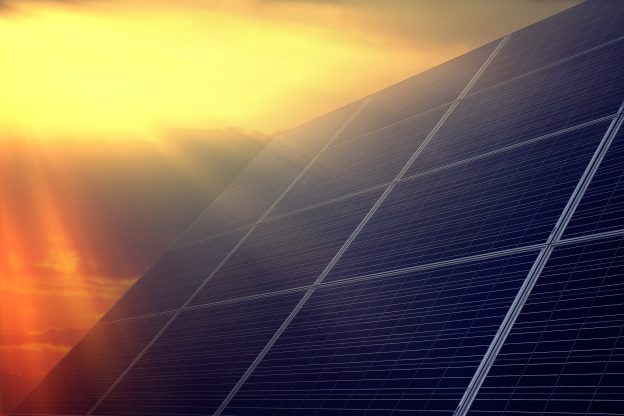Polysilicon:
Polysilicon prices have maintained stable throughout the week. The mainstream concluded price for mono recharge polysilicon is RMB 58/KG, while mono dense polysilicon is priced at RMB 56/KG and N-type polysilicon is currently priced at RMB 68/KG.
Based on market activity, the polysilicon market remains stagnant. There are virtually no transactions for n-type polysilicon, while deals for p-type polysilicon remain sluggish due to high downstream inventory. Consequently, polysilicon enterprise inventories are expected to rise. In terms of supply, the polysilicon segment's production structure has undergone significant changes. Additionally, downstream sectors are focused on cost control, resulting in higher demand for low-quality p-type polysilicon. Consequently, the production proportion of n-type polysilicon is gradually decreasing. However, with new polysilicon capacity set to come online in the second quarter, oversupply issues are expected to worsen. Furthermore, fluctuating and declining silicon metal costs are further burdening polysilicon suppliers. On the demand side, wafer segment profits have reached their lowest levels due to lower prices and high inventory pressures. This has led to a significant decline in polysilicon demand from the wafer segment. Apart from existing orders, ingot manufacturers have largely halted polysilicon purchases, instead opting to place orders based on weekly demand. This week, all polysilicon prices have declined, with n-type polysilicon falling to CNY 68/kg. TrendForce predicts that if supply and demand dynamics in the polysilicon sector intensify, polysilicon prices will continue to decline further.
Wafer:
The prices of wafer have declined throughout the week. The mainstream concluded price for M10 P-type wafer is RMB 1.90/Pc, while G12 P-type wafer is priced at RMB 2.65/Pc. The mainstream concluded price for M10 N-type wafer is RMB 1.80/Pc and G12 N-type is priced at RMB 2.80/Pc.
On the supply side, there's a trend among ingot manufacturers to consider reducing production. However, only some second-tier manufacturers have definite plans to cut production, while others maintain high utilization rates. Currently, wafer inventory stands at approximately 4 billion pieces. Despite potential decreases in raw material costs as wafer manufacturers improve their use of mixed p-type polysilicon, many wafer manufacturers are still experiencing losses and are expected to continue reducing production. Furthermore, high inventory turnover days on the supply side mean that even with increasing demand and planned production growth in the cell sector month-over-month, wafer supply remains in surplus. Consequently, the impact of rising demand on stabilizing wafer prices is limited. This week, prices for both P-type and N-type wafers are lower than their production costs. Deals for p-type wafers are declining, with them gradually becoming customized products. Meanwhile, due to imbalanced supply and demand, N-type wafer prices are expected to further decrease. Continual losses are prompting manufacturers burdened with high costs and low cash flow to consider halting production and clearing out capacity. This indicates a rapid process of capacity clearance in the wafer segment, similar to what occurred in the cell sector last year.
Cell:
Cell prices have been stable this week. The mainstream concluded price for M10 cell is RMB 0.390/W, while G12 cell is priced at RMB 0.380/W. The price of M10 mono TOPCon cell is RMB 0.47/W, while that of G12 mono TOPCon cell is RMB 0.49/W.
Let’s start by examining the supply side. In the cell sector, various activities such as acquisitions, corporate reorganizations, and production halts are underway. Some cross-border enterprises are halting production and retracting their investments from this sector due to sustained losses. Conversely, leading manufacturers are accelerating their acquisition of low-priced capacity to expand their high-efficiency N-type capacity and reduce investment costs in production equipment simultaneously. As a result, Q2 and Q3 are pivotal periods for the upgrading of P-type cell capacity. According to TrendForce's New Energy Research Center, nearly 24% of P-type capacity requires upgrading. TrendForce's analysis indicates that leading manufacturers are progressing faster with capacity upgrades, while second and third-ranked manufacturers are encountering cash flow pressures, resulting in slower-than-expected upgrading processes.
Shifting to the demand side, as customer demand gradually increases and planned production in the module segment rises, the market demand for cells shows positive signs. However, demand for high-efficiency P-type cells is weaker, exerting downward pressure on their prices. In contrast, demand for high-efficiency N-type cells is stronger, leading to smoother shipments. Currently, the cell sector has more opportunities to generate profits from the module segment, and there will likely be continued price negotiations in future cell prices.
Module:
Module prices have remained stable throughout the week. The mainstream concluded price for 182mm facial mono PERC module is RMB 0.93/W, 210mm facial mono PERC module is priced at RMB 0.95/W, 182mm bifacial glass PERC module at RMB 0.94/W, and 210mm bifacial glass PERC module at RMB 0.97/W.
On the supply side, module manufacturers are gearing up to ramp up their planned production, expected to see a significant increase starting from the second quarter. The gap in operating rates between leading enterprises and second- and third-ranked manufacturers is widening. This year, most orders are still expected to be dominated by leading manufacturers.
As for market demand, policies focusing on power consumption are being implemented gradually. These policies will provide clearer and more favorable guidelines, spanning from adaptive regulation of the transmission grid to transactions in renewable power markets. Such policies are poised to lay a solid foundation for future improvements in new energy installations.
Domestically, ground-mounted projects are set to kick off gradually. With relatively low module prices, the Internal Rate of Return (IRR) for previous orders in ground-mounted projects sees substantial growth potential, expected to drive further installation demand. Turning to overseas markets, import volumes in Europe and the United States are projected to rise in the second quarter, bolstering demand for modules.
In summary, module prices have remained stable this week, and whether they will increase hinges on negotiations between suppliers and buyers.







